“Art Museums are the site of public forum.” Meet UQ Art Museum's Director
UQ Art Museum Director Peta Rake.
(Photo credit: Rhett Hammerton )
Q: What drew you to joining the UQ Art Museum?
I've always been invested in forms of experimental education that explore how research is dramatized through exhibitions. University art museums are dynamic places to work. We have scope to push boundaries and explore new models of practice that make us unique in the wider arts sector.
The foundations built by UQ Art Museum’s inaugural Director Honorary Professor Nancy Underhill created a progressive model for a Museum – operating as a ‘lab’ which fostered a close connection between faculty and Museum and allowed students to immerse themselves in both theory and practice. Her vision initiated the first course on curatorial training for undergraduates and saw the Museum as a site for critical practice and experimentation with students at the core. We continue that work today through our internship program and campus engagement.
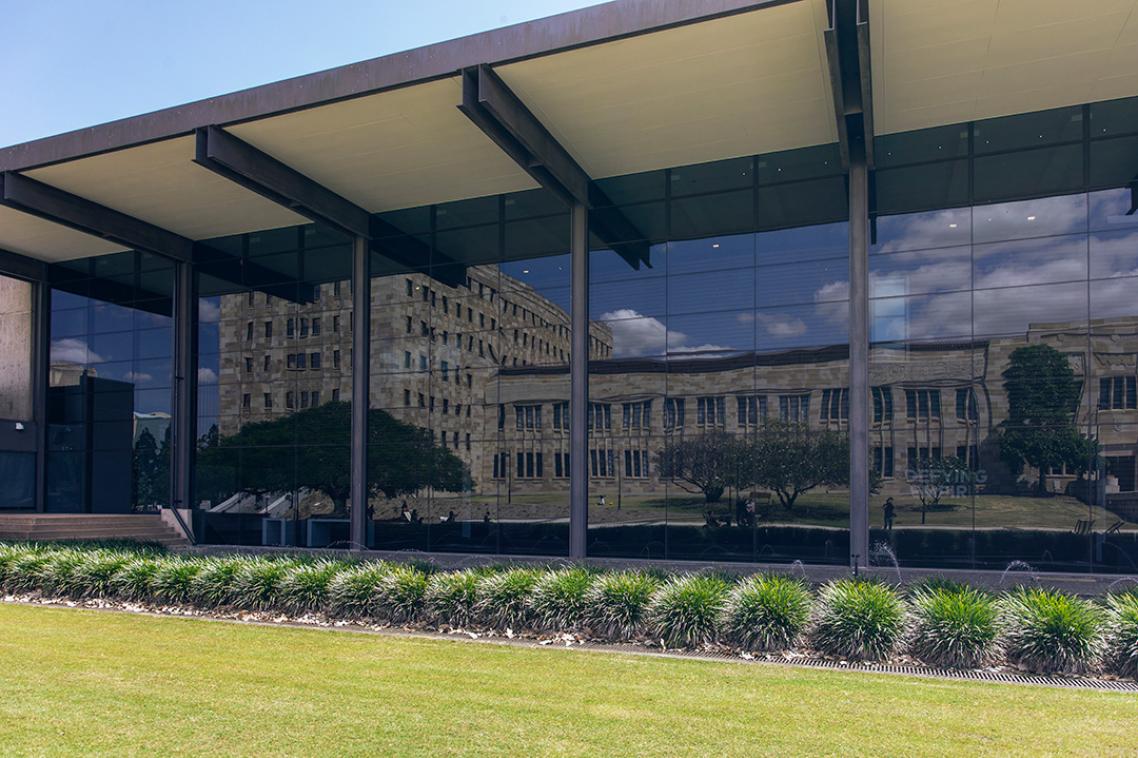
UQ Art Museum.
(Photo credit: Jack Harlem )
Q: What does your day-to-day as a Museum Director look like?
As Museum Director, no two days are ever the same. Right now, I’m supporting the team while we install our Semester 2 exhibitions, so my day involves finalising artwork details with artists, student recruitment for Semester 2 and progressing artwork donations for the UQ Art Collection. UQ Art Museum has a passionate community of supporters and we are deeply grateful for their investment, both through their time and much-needed gifts, including artworks that form part of our collection. In 2023, Danielle Milani gifted us two beautiful paintings by Waanyi artist Judy Watson, which were featured in our exhibition Mare Amoris | Sea of Love and were an important part of the exhibition’s storytelling.
In 2026, UQ Art Museum will celebrate its 50th anniversary. A large part of my focus lately has been planning this celebration, so it’s been inspiring to reflect on our contributions to teaching and learning and campus culture. I’m also working with the team on how we can connect as many people as possible with art. Not just students in HASS, but those who are studying medicine and science. How can we invite them into our exhibitions? How can we use art to assist with their learning?
Q: What do you enjoy the most about the role?
Forging a connection between art, artists and research. For example, we have been working with staff from the Centre for Marine Science for the last few years on our Blue Assembly project, which explores humanity’s relationship with water. Part of this project was a collaboration on the MARS1001 Living Oceans course, a first-year marine science course that invites students to examine humanity’s relationship with water and ‘blue’ spaces through various historical and cultural lenses.
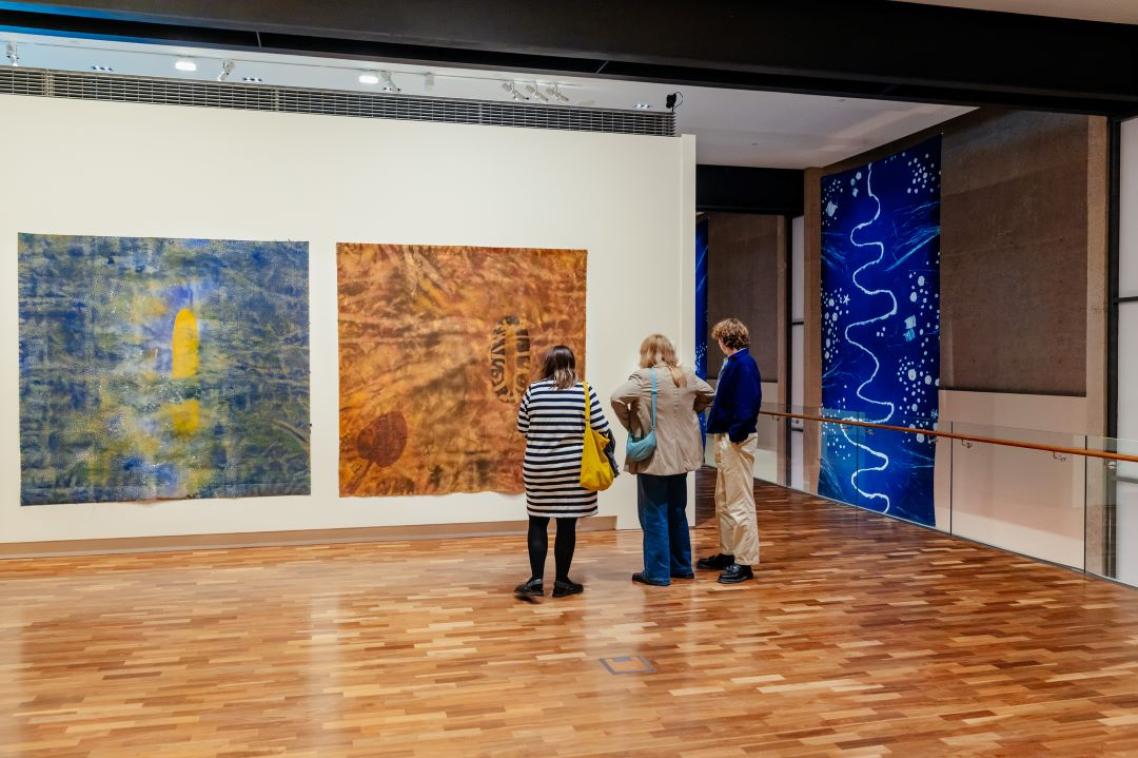
Paintings on display at the Mare Amoris | Sea of Love exhibition opening (2024), part of the Blue Assembly research initiative.
(Photo credit: Joe Ruckli )
Q: What initiatives does the Art Museum have in place to encourage critical thinking and engagement with art?
Most notably, our Cultural Mediation program supports semester-long critical learning with students, as well as inviting two-way art-centred dialogue with our audiences. Uniquely in our sector, we run exhibitions alongside the academic calendar, which means we can work closely with course conveners to engage their students with the exhibitions from week 1 until when assignments are due. The program has been recognised nationally through our partnership with Creative Australia for the Australian Pavillion at the Venice Biennale in 2024.
Peta Rake (centre) with the UQ Art Museum Cultural Mediators.
(Photo credit: UQ Art Museum.)
One of my favourite initiatives run by Museum staff is called Visual Thinking Strategies, which encourages students across disciplines to look more deeply at art. We have worked with courses as diverse as histology (the study of skin tissue at a microscopic level) by using artwork to help train students to investigate elements in more detail.
We also have an accessible Art on Campus program which has more than 300 artworks showcased in public spaces across UQ’s various campuses. We recently refreshed the works on display in the Central Library, including a series of portraits of our famous Happy Ending sculpture by Sydney-based artist Nell, which greets visitors out the front of the museum.
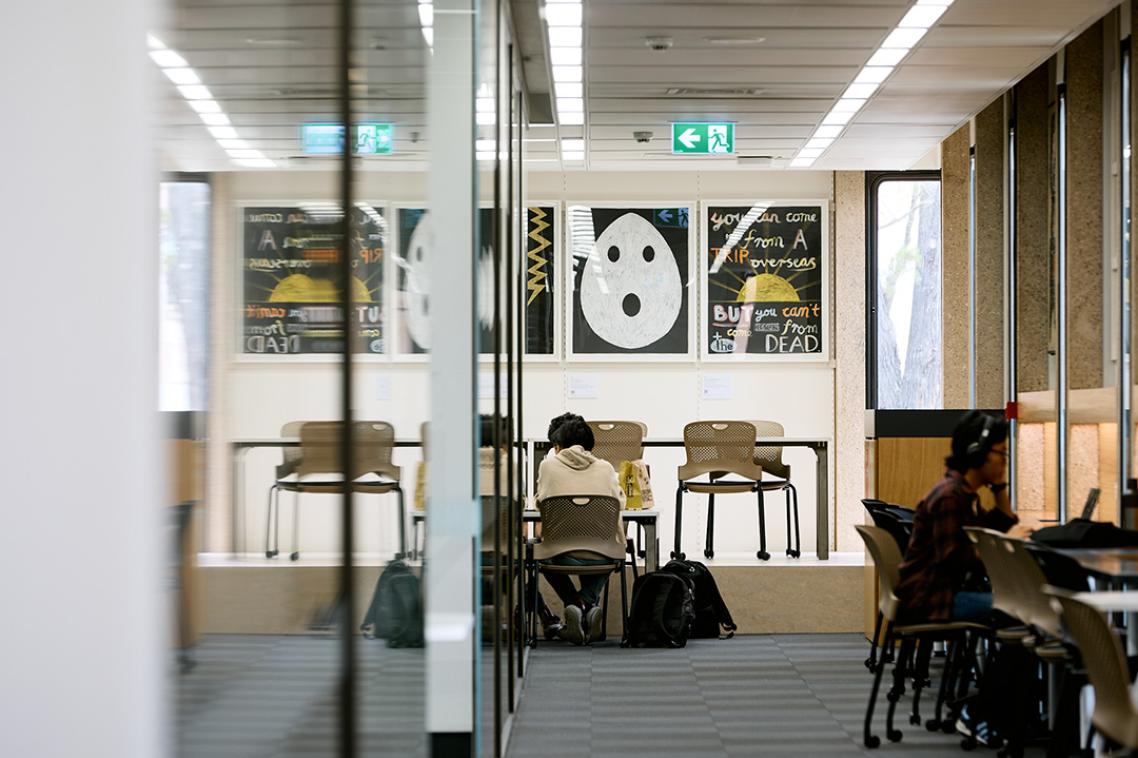
Portraits of Nell's Happy Ending sculpture (centre) on display in UQ's Duhig Building.
(Photo credit: The University of Queensland )
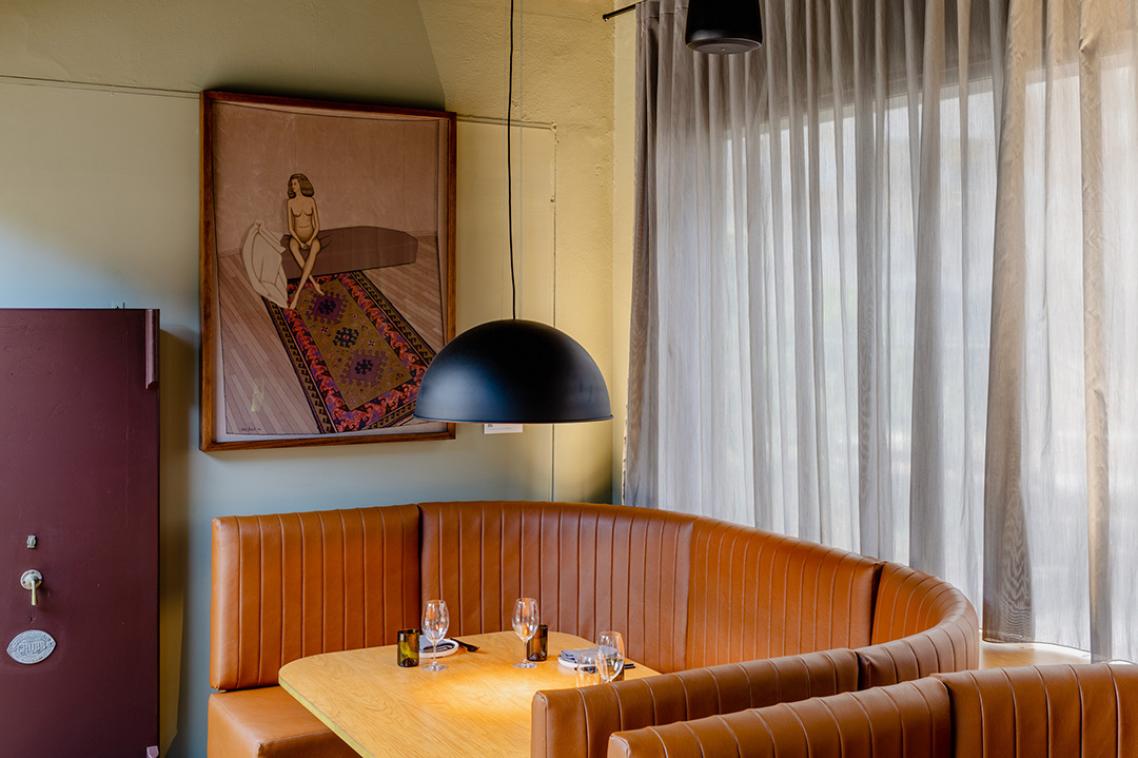
An artwork on display at Patina, Alumni Court on St Lucia campus.
(Photo credit: Joe Ruckli )
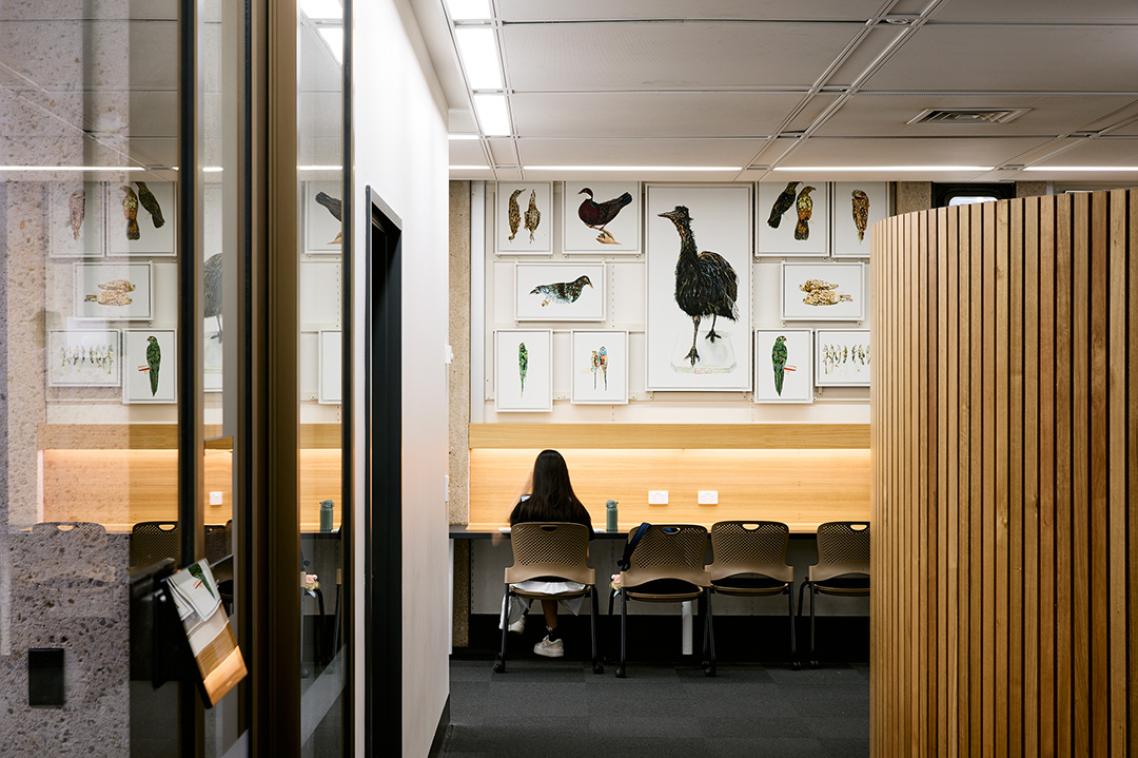
Artworks by Emma Lindsay displayed in the Duhig Building. From the series “Extinction Flock (29 extinct Australian bird specimens”, 2013-16.
(Photo credit: The University of Queensland )
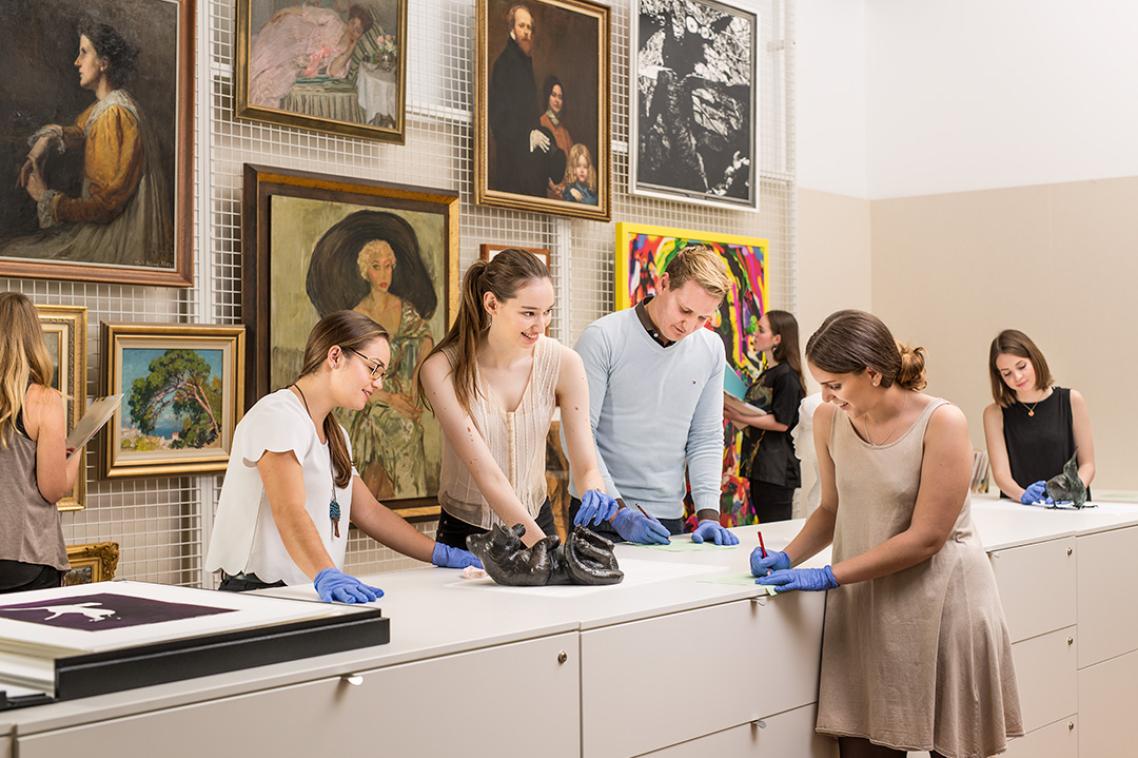
UQ Art Museum runs their exhibitions alongside the academic calendar, which allows staff to work closely with course conveners to engage their students with the exhibitions throughout the entire semester.
(Photo credit: The University of Queensland. )
Q: There’s a lot in the pipeline for semester 2, can you give us a sneak peek?
The first exhibition by our new curator Freja Carmichael, to come together as water opens on Tuesday 22 July. Freja is a Ngugi woman from Quandamooka Country, an internationally recognised curator, and a current UQ PhD student. The exhibition is drawn from her research specifically thinking about reenvisioning water protection. I hope the artistic practices showcased in the exhibition encourage visitors to leave with a renewed understanding of the histories and futures of vital intertidal and water systems from a First Nation’s perspective.
We will also launch SUNA (Middle Ground), a significant public artwork which will be on the front lawn of the museum next semester. It’s a replica of a traditional Papua New Guinea (PNG) round house, created by local artist Yuriyal Bridgeman and a significant artwork in celebration of the 50th anniversary of PNG independence from Australia, supported via UQ Arts.
Another upcoming show that I am excited for is our first pipe organ commission called Earth Works as part of UQ’s partnership with Brisbane Festival. It will create a whole-body listening experience for audiences by showcasing the extent of the organ’s musical capabilities.
Artworks featured in semester 2 exhibition
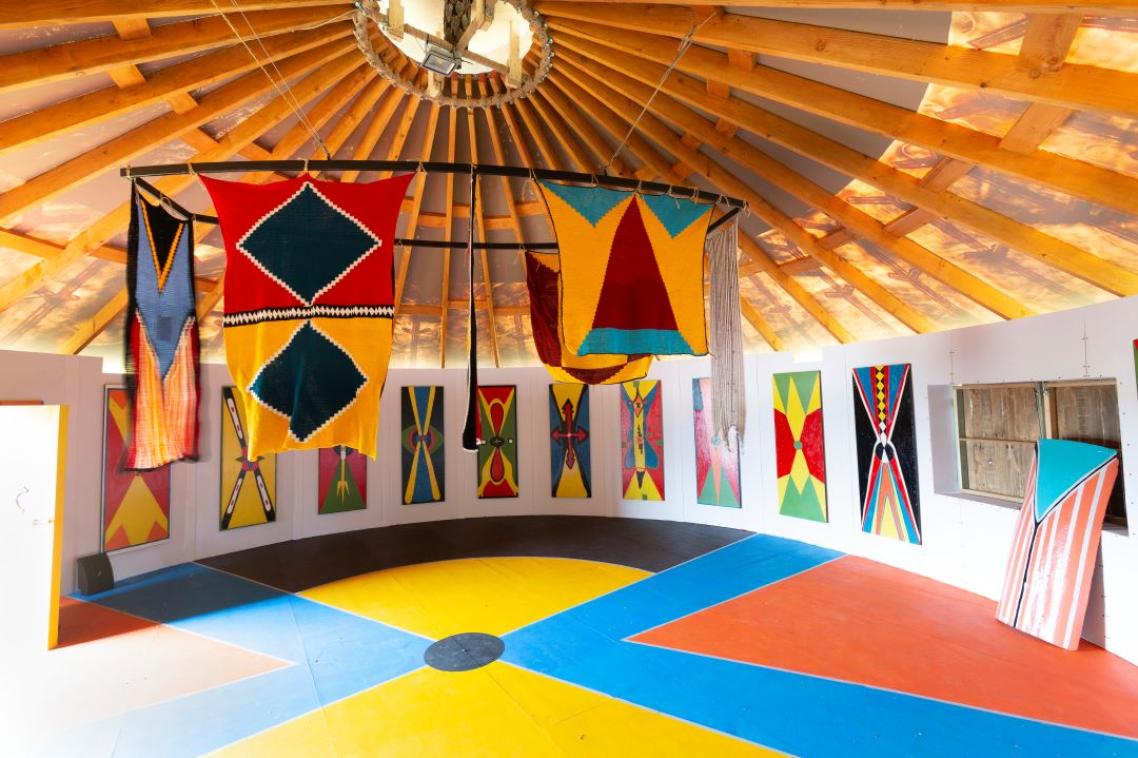
Yuriyal Bridgeman and Haus Yuriyal, SUNA (Middle Ground) 2020. Installation view interior for the 22nd Biennale of Sydney (2020), Cockatoo Island.
(Photo credit: Alex Robinson )
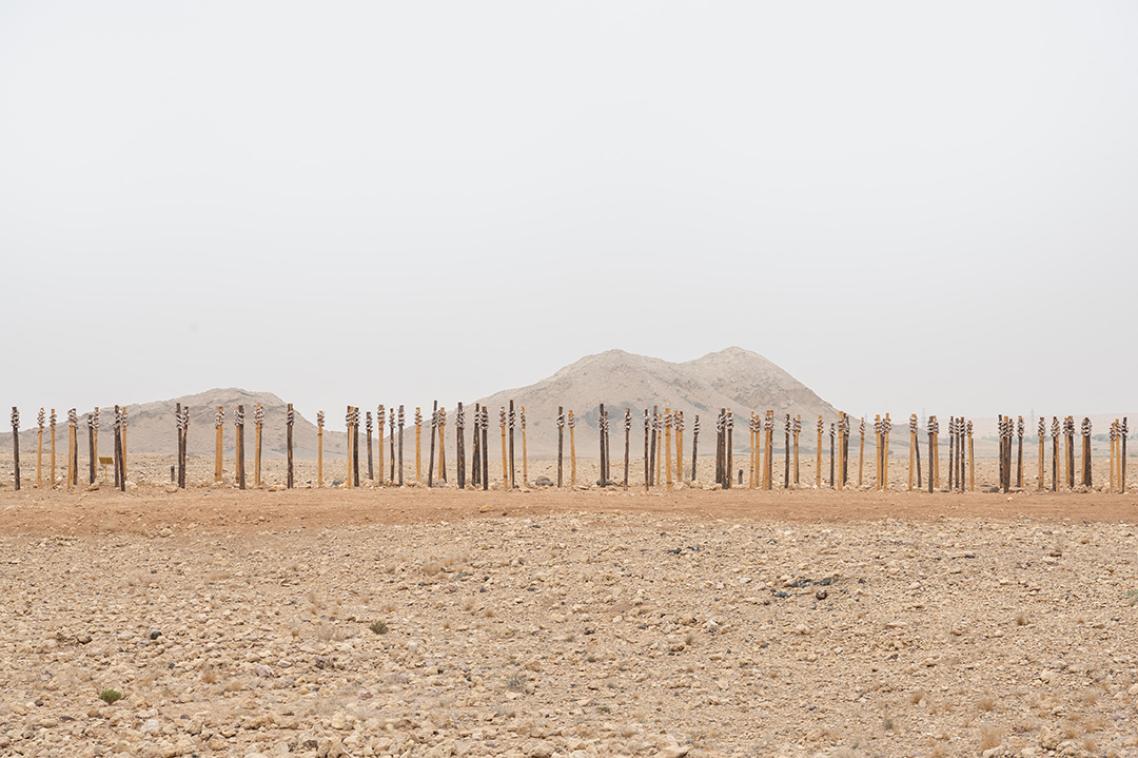
Megan Cope, Kinyingarra Poles, 2024
(Photo credit: Motaz Mawid )
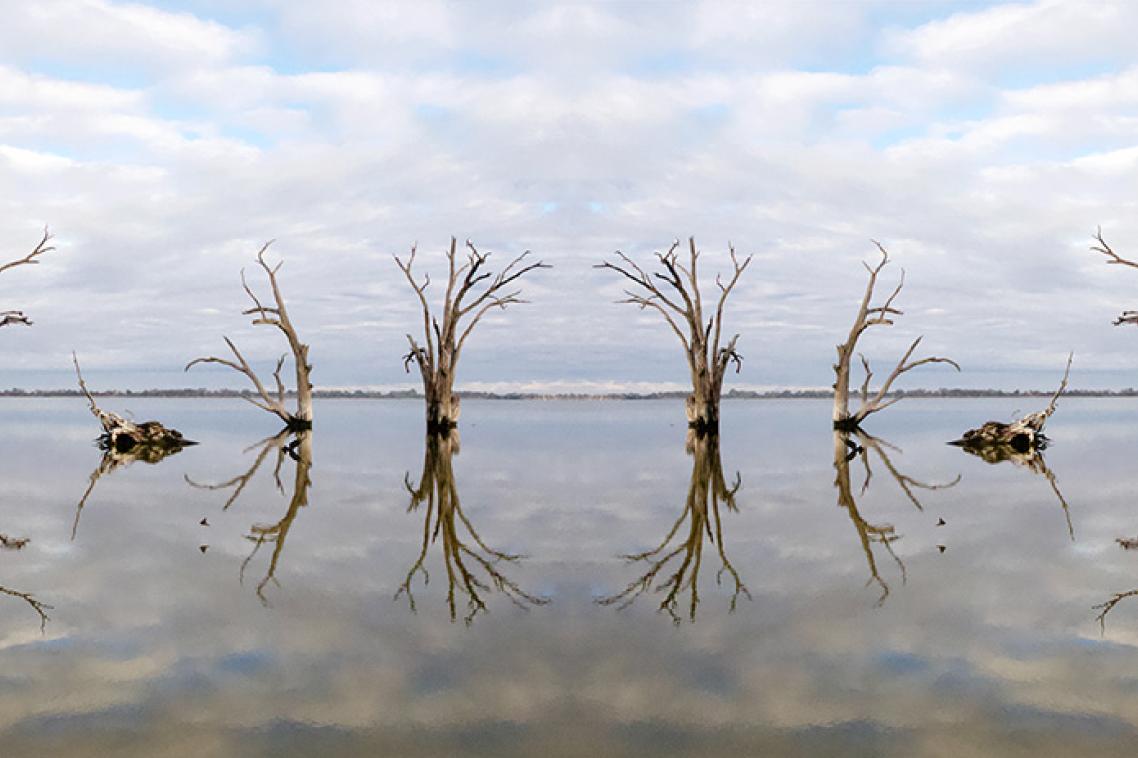
Nici Cumpston, Oh my Murray Darling, 2019
(Photo credit: Nici Cumpston )
Q: Art Museums have faced some tumultuous times over the last few years. Why are they important institutions for universities?
Art Museums are sites of assembly, learning, and public forum, and in a moment where they are under threat we need wider support and understanding of the vital role artists play in society as educators and truth-tellers. I believe that the purpose of having a university art museum on campus is to make space outside of the classroom for alternative forms of creative and critical inquiry. Through the exhibitions we curate and the artworks we display across campus, we can encourage meaningful connections and vital conversations.
All UQ Art Museum Semester 2 exhibitions will open Tuesday 22 July and run until Saturday 6 December.
Topics
Related articles
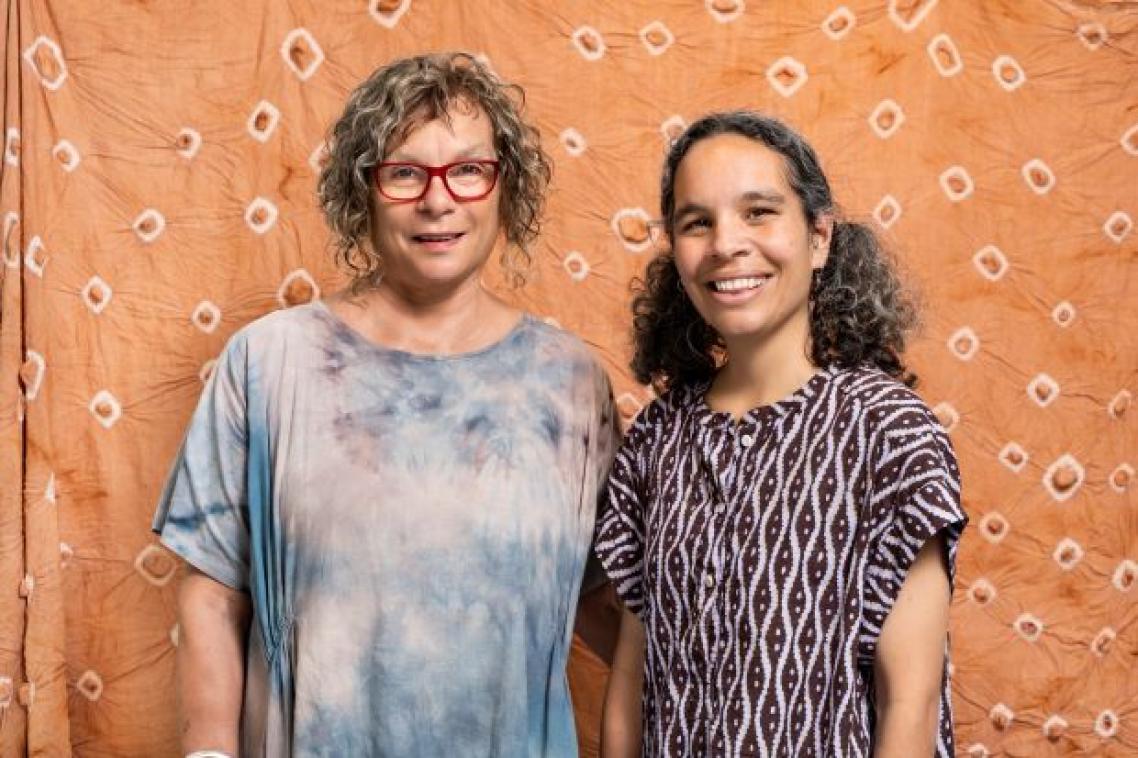
Artworks creating waves for global action on ocean futures
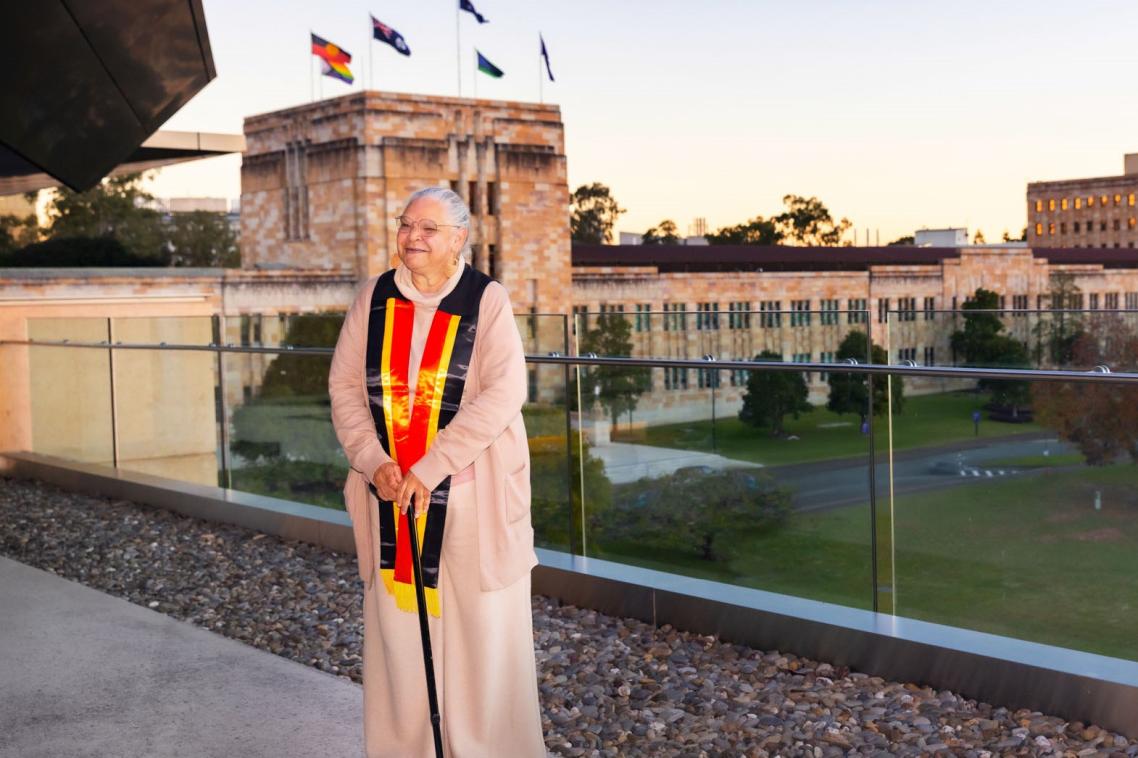
Finding a “little language family”
Media contact
UQ Communications
communications@uq.edu.au
+61 429 056 139
